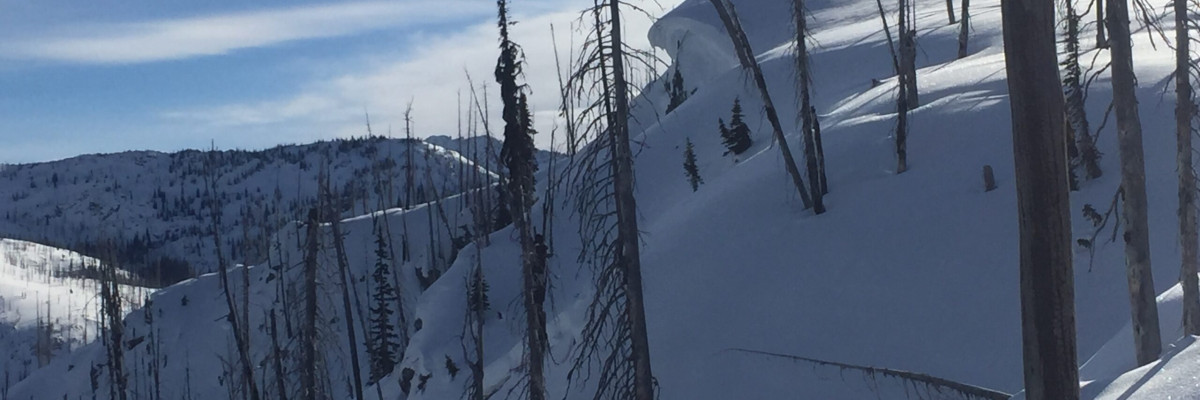The avalanche danger for the west central Montana backcountry is MODERATE on slopes with a shallow snowpack. All other slopes are Low. Large avalanches can be triggered in isolated locations, and smaller avalanches are possible in specific terrain. Careful evaluation is needed to identify features of concern. The danger will rise throughout the day and may reach considerable by Friday morning.
Good morning, this is Travis Craft with the West Central Montana Avalanche Center’s avalanche advisory for January 17, 2019. This danger rating does not apply to operating ski areas, expires at midnight tonight and is the sole responsibility of the U.S. Forest Service.
Weather and Snowpack
Mountain temperatures range from 23 F to 28 F. In the Bitterroot winds are 15 mph with gusts of 23 mph out of the ESE. In the northern part of the advisory area, winds are 9 mph and gusting to 13 mph out of the ESE. It has just started to snow this morning.
The snowpack is relatively stable this morning. There are a variety of old snow surfaces (melt-freeze crusts, surface hoar, and near surface facets) for the new snow to land on. The fresh snow will take time to bond to the old snow. The addition of snow will make our buried weak layers(facets and buried surface hoar) more sensitive to natural triggers(new weight from snow) and human triggers. With the weather change the avalanche conditions will change.
The primary avalanche problem today is persistent slabs. The buried weak layers in our snowpack are getting harder to trigger. These layers are more reactive in shallow, weak snowpacks less than 3 feet deep(video).
The other two problems will be wind drifted snow and new snow. The new snow will land on a variety of old snow surfaces and winds will load leeward slopes on the old snow surfaces too. These slabs will be sensitive to human triggers today and Friday.
Bottom line: The snowpack is fairly stable this morning. The new snow will create new problems throughout the day into Friday. Pay attention to the changing weather and changing avalanche conditions. Constantly reevaluate your route and carefully assess each slope when recreating today.
Avalanche and Weather Outlook
It is starting to snow this morning and is predicted to continue through Friday. See the forecast here. The new snow will be landing on a variety of old snow surfaces and buried weak layers. This recipe will increase the avalanche danger.
If you get out into the mountains, please share what you see on our public observations page. They are not only helpful to your community but extremely helpful to us.
Ski and ride safe.
















